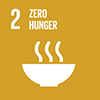Related SDGs

Goal 2
Related news
As the United Nations Secretary-General, Mr Ban Ki – Moon noted in the
Millennium Development Goals Report 2015, “
disparities between rural and urban areas remain pronounced” and big gaps persist in different sectors:
- It is estimated that in 2015 still roughly 2.8 billion people worldwide lack access to modern energy services and more than 1 billion do not have access to electricity. For the most part this grave development burden falls on rural areas, where a lack of access to modern energy services negatively affects productivity, educational attainment and even health and ultimately exacerbates the poverty trap.
- In rural areas, only 56 per cent of births are attended by skilled health personnel, compared with 87 per cent in urban areas.
- About 16 per cent of the rural population do not use improved drinking water sources, compared to 4 per cent of the urban population.
- About 50 per cent of people living in rural areas lack improved sanitation facilities, compared to only 18 per cent of people in urban areas.
Sustainable Development Goal (SDG) 2 of the Post-2015 Development Agenda calls to “
end hunger, achieve food security and improved nutrition and promote sustainable agriculture”. In particular, target 2.a devotes a specific attention to “
Increase investment, including through enhanced international cooperation, in rural infrastructure, agricultural research and extension services, technology development and plant and livestock gene banks in order to enhance agricultural productive capacity in developing countries, in particular least developed countries".
Background information
Promoting sustainable agriculture and rural development (SARD) is the subject of
chapter 14 of Agenda 21.
The major objective of SARD is to increase food production in a sustainable way and enhance food security. This will involve education initiatives, utilization of economic incentives and the development of appropriate and new technologies, thus ensuring stable supplies of nutritionally adequate food, access to those supplies by vulnerable groups, and production for markets; employment and income generation to alleviate poverty; and natural resource management and environmental protection.
The
Commission on Sustainable Development (CSD) first reviewed Rural Development at its
third session in 1995, when it noted with concern that, even though some progress had been reported, disappointment is widely expressed at the slow progress in moving towards sustainable agriculture and rural development in many countries.
Sustainable agriculture was also considered at the
five-year review of implementation of Agenda 21 in 1997, at which time Governments were urged to attach high priority to implementing the commitments agreed at the
World Food Summit, especially the call for at least halving the number of undernourished people in the world by the year 2015. This goal was reinforced by the
Millennium Declaration adopted by Heads of State and Government in September 2000, which resolved to halve by 2015 the proportion of the world's people who suffer from hunger.
In accordance with its multi-year programme of work, agriculture with a rural development perspective was a major focus of
CSD-8 in 2000, along with integrated planning and management of land resources as the sectoral theme. The supporting documentation and the discussions highlighted the linkages between the economic, social and environmental objectives of sustainable agriculture. The Commission adopted decision 8/4 which identified 12 priorities for action. It reaffirmed that the major objectives of SARD are to increase food production and enhance food security in an environmentally sound way so as to contribute to sustainable natural resource management. It noted that food security-although a policy priority for all countries-remains an unfulfilled goal. It also noted that agriculture has a special and important place in society and helps to sustain rural life and land.
Rural Development was included as one of the thematic areas along with Agriculture, Land, Drought, Desertification and Africa in the
third implementation cycle CSD-16/CSD-17.
A growing emphasis is being placed on the Nexus approach to sustainable rural development, seeking to realize synergies from the links between development factors such as energy, health, education, water, food, gender, and economic growth.
In this regard and as part of the follow up to the
2012 Conference on Sustainable Development or Rio+20, the
United Nations Department of Economic and Social Affairs (UN-DESA), in collaboration with
SE4All,
UN-Energy and the
Economic Commission for Africa (ECA), organized
Global Conference on Rural Energy Access: A Nexus Approach to Sustainable Development and Poverty Eradication, in Addis Ababa, Ethiopia, Dec 4 – 6, 2013.